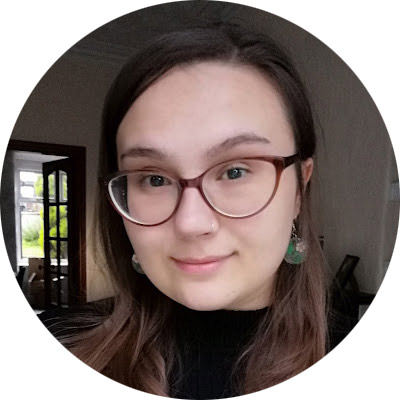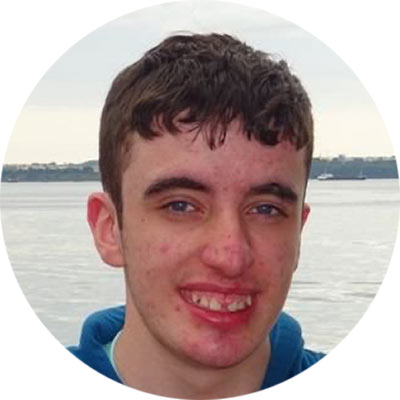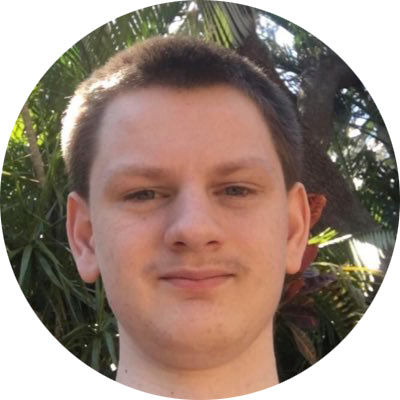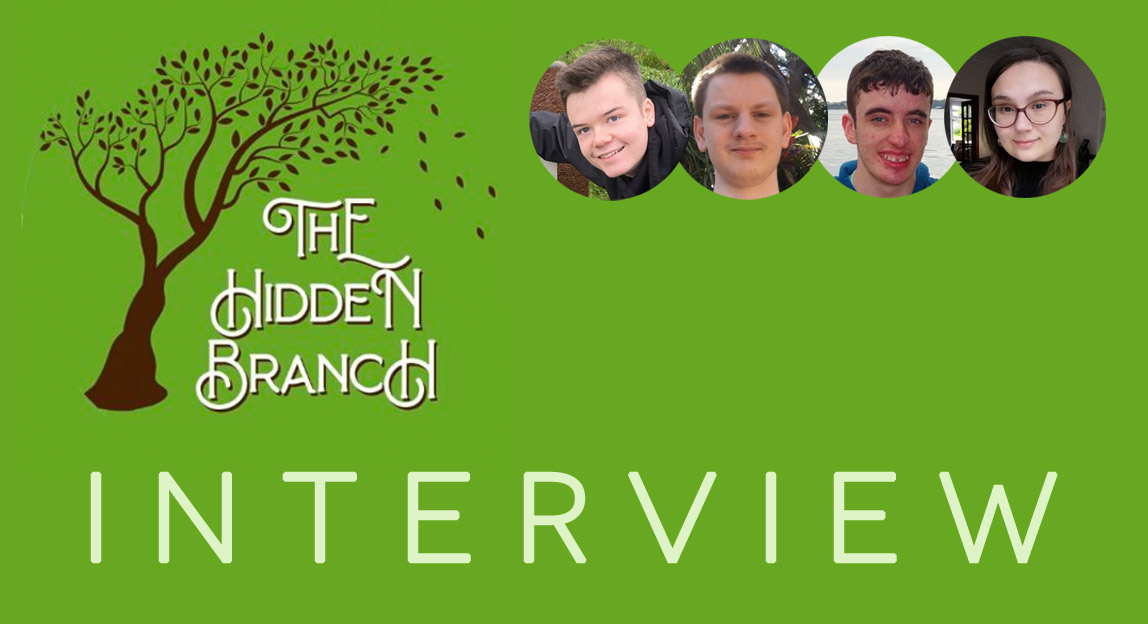I recently became an ambassador for the Hidden Branch, a group that advocates for young genealogists. I’m really pleased to be involved in the endeavour of encouraging take-up of our hobby and helping the next generation get involved.
I got some interesting responses from group members when I asked about their background, interests and experience with DNA.
The genealogists
Sophie

My name’s Sophie. I’m 25, based in the UK, and have been researching family history since 2012. My research interests are primarily focused on the East Midlands counties of England, especially Derbyshire as I have a lot of ancestors from there! I’m also conducting a “Haire” surname study. I love genetic genealogy, and enjoy exploring the intersections of genealogy and psychology.
Where to find me:
- Instagram: @derbygenes
- Twitter: @derbygenes
- Blog: https://blog.derbygenes.co.uk/
George

I’m George Hall, from the Spen Valley in West Yorkshire, England. My ancestry is pretty much 50% from the ancient parishes of Dewsbury, Birstall and Batley, which are located in and around the Spen area. I also have a strong connection to Ireland, mainly in County Louth and possibly County Armagh. I also luckily descend from some deeply interesting City of York lines and rest of my ancestry is pretty much scattered around Yorkshire and parts of Lincolnshire.
Where to find me:
- Twitter: @_george_hall_
- Facebook: @genealogywithgeorge
- Instagram: @genealogywithgeorge
- Website: genealogywithgeorge.com
Daniel

Hi there! My name is Daniel and I’m an 18-year-old young genealogist from Ireland. I am a podcaster (The Irish Genealogy Podcast) and co-founder of The Hidden Branch. My research interests are from two parts of Ireland (Mayo and Waterford) so it doesn’t change very much there, but nevertheless I have plenty of fun doing genealogy whatever avenue I go down in my journey!
Where to find me:
- Instagram: @daniels_genealogy
- Twitter: @DanielGenealogy
- Facebook: @TheDanielsGenealogy
- Website: https://danielsgenealogy.com/
PJ

Hello, I’m Patrick-Joseph Elias, and I’m an aspiring professional genealogist from sunny St. Pete Florida. I’ve been researching my family and other families like mine for 7 almost 8 years. I’m the face behind Slavic Genealogy and mostly focus on Western Slavic (Polish, Czech and Slovak) and Genetic Genealogy but I also research 1800s-1900s Catholic Immigrants in America.
Where to find me:
- Twitter: @SlavicGen
- Instagram: @slavicgenealogy
- Facebook: @SlavicGen
- Website: https://slavicgenealogy.wordpress.com/
Can you tell me a bit about the Hidden Branch and how you came to be involved in it?
PJ: The Hidden Branch (THB) is a genealogical organization that focuses genealogists on younger genealogists between the ages of 13 and 25. We advocate for younger people in genealogical spaces, provide outlets for young researchers to submit their writings and promote opportunities for young genealogists. I was the first person to join THB in 2019 after it was formed by Daniel, Emily and Tyler. Currently I’m the chairman of the Hidden Branch.
Sophie: The Hidden Branch is a group of young genealogists who came together to start writing blog posts to share their love of genealogy and encourage other young people to research their history. I joined in July 2021 as I enjoy writing and wanted to be part of a group who are as passionate as I am about teaching and encouraging people to research their family history.
Daniel: I’m the co-founder of The Hidden Branch. It’s a place for young genealogists to learn about genealogy in different places and for young genealogists to connect in our Facebook group community. I’ve been involved since day dot (October 2019) and we’re still going strong. We’re just young genealogists wanting to share our wisdom and help others like others have done for us, that’s the best way of putting it!
George: I followed the Hidden Branch on Instagram and was messaged by Daniel on behalf of the team asking if I wished to join. I accepted and the rest is history.
When did you first take a DNA test?
PJ: I took my first DNA test with Ancestry in 2017 when I was 13. At which point I uploaded my DNA to every place I could.
Sophie: I first DNA tested in July 2020 with Ancestry. In August 2021 I was able to test my maternal grandfather and hope to test my other three grandparents as well. Eventually I’d like to do mtDNA testing, and Y-Chromosome test a family member.
George: My maternal grandparents took one as lockdown began and the results came back in July 2020. I got my results in early September 2020 and my dad’s in July 2021.
Daniel: As of now I haven’t done a DNA test (I’m in a very hectic year of my education so haven’t had much time for genealogy) but I hope to at some point!
Has DNA led to any major breakthroughs so far?
Sophie: There are little mysteries all over my tree waiting to be found, or waiting to be solved, and DNA is a wonderful tool to have in your genealogy belt. However what DNA testing has been repeatedly useful for is photographs. Thanks to my DNA test, I have found photos of ancestors, identified unlabelled photos from my collection, and united cousins with photos of their ancestors and relatives they’ve never seen before. For example, a 14cM DNA match was able to help me to confirm that a photo I had was of my 2nd great-grandparents. Additionally, an 11cM match to me was a 108cM match to my grandad, and they had a photo of my 2nd great-grandmother who I’d never seen before. Photos really help to bring genealogy to life, so I think every photo found is a breakthrough.
PJ: Many. On my paternal side, my 2nd great grandparents were Czech-Romanian Orphans. No one in the family knew where they were from in Europe nor who their parents were. Through MyHeritage I found many Elias cousins who came from Svata Elena, a small Czech Village in Romania that I later found out was where my 5th and 4th great-grandparents first settled. Around 1 in 8 of my ancestors lost both their parents before the age of 13. I therefore have many ancestors that didn’t know where they were from, but DNA has been an amazing tool in breaking down my brick walls.
George: DNA has given me the identity of my maternal grandfather’s paternal grandparents, William Edward and Annie Louise Keywood. I’ve no clue how his father fits into the family but DNA has ruled out two of their children. My dad’s DNA test may have led to me discovering the identity of man I suspect to be my 4th great-grandfather; however, the evidence is a bit flimsy and needs a lot more work. I have also been able to confirm that we were correct with the parentage of my orphaned great-grandfather.
Which DNA tools and/or approaches do you find most interesting and useful?
Sophie: Ancestry’s Thrulines has been a great starting point in identifying some matches, though it’s best to proceed with caution and always check sources as it hasn’t always been correct. It’s useful to colour code DNA matches and I have tried various methods. The most straightforward way for me is to code according to which 2nd great-grandparent they are related to. I also often use the DNA Painter Shared cM tool to estimate a relationship as I find its approximations are more helpful than those on other sites. Additionally, I like to make the most of my DNA by uploading to different sites; MyHeritage is useful as it tells you how much DNA your matches share with each other, rather than just how much they share with you.
PJ: I will always recommend using the Leeds method and DNA clustering because they can help organize DNA matches into groups. That being said, DNA groups on Ancestry and now My Heritage have been vital to me. I’m a very visual person so when DNA groups are available it helps to group my matches into colored groups depending on which ancestors they descend from.
George: I found the Leeds Method’s principles in organising DNA matches, but the most important tool has been DNA Painter’s Shared Cm tool and its probabilities too. I am certainly not an expert in this area, so going to a tool I can rely on that gives all the probability relationships that I then can test out theories on has been invaluable.
Can you suggest any ways the DNA/genetic genealogy community could reach out more effectively to younger genealogists? Are there any barriers stopping you from learning or participating as much as you’d like to?
Sophie: The price of DNA tests I think is a barrier for many people, but especially young genealogists. It would be helpful for the genetic genealogy community to have an awareness of when sales at various testing companies occur and actively share these on social media because it’s easy to miss them when they only last a short while. Uploading videos about genetic genealogy concepts to YouTube or other social media may also be a way to help facilitate the learning of younger genealogists. Since we often can’t attend conferences/events for financial or logistical reasons, having the opportunity to learn in our own time is useful.
PJ: This is a tough question to answer, there’s not too much the genealogical world can do since DNA has a paywall it can be hard for younger researchers to access. There’s also the problem that parents may not want their child to take a DNA test. This might happen in cases where the child is adopted/have parents that is, or parents worry about privacy. One thing that the community can do is make more content, particularly on YouTube and other video apps which are popular with younger people.
Thanks to the Hidden Branch members
Many thanks to Daniel, George, PJ and Sophie for these responses. You can find the Hidden Branch at:
- Website: https://thehiddenbranch.com/
- Facebook: @thehiddenbranch
- Instagram: @thehiddenbranch
- Twitter: @TheHiddenBranch
Contact info: @dnapainter.bsky.social / jonny@dnapainter.com
